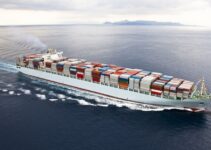Harley-Davidson is a motorcycle manufacturing American multinational company. William S. Harley, William A. Davidson, Walter Davidson, and Arthur Davidson founded the company in 1903. Today, we’ll discuss the value chain analysis of Harley-Davidson supply chain analysis; primary and supporting activities in the process of value chain analysis Example Company. They are inbound and outbound logistics, operations, marketing, and customer service; infrastructure, HRM, technology, and procurement as an application of the value chain analysis process.
Suppliers of Harley-Davidson
- GSK Technologies
- HJC Vina
Parts Exporter Countries of Harley Davidson
- Thailand
- China
- Germany
- Taiwan
- Vietnam
The Value chain analysis of Harley-Davidson supply chain analysis would analyze the primary and supporting activities in the process of value chain analysis. They’re inbound and outbound logistics, operations, marketing, and services; infrastructure, HRM, technology, and procurement. Here’s the supply chain analysis of Harley-Davidson value chain analysis company example as follows;
Value Chain Analysis of Harley-Davidson
Let’s discuss the primary and supporting activities involved in the process of value chain analysis of Harley-Davidson supply chain analysis. It is an application of value chain analysis based on Porter’s model; some of the key elements and components of value chain analysis are as follows;
Primary Activities of Harley-Davidson
Some of the five main primary activities in the value chain analysis of Harley-Davidson supply chain analysis are as follows;
Inbound Logistics of Harley-Davidson
I-Sourcing Suppliers
Harley-Davidson has established a very large supplier network comprising 29 trading and supply chain partners in various countries across the world. The motorcycle brand sources different parts from various countries to maintain quality and cost. They’re as follows;
- Electronic components from Mexico and China
- Bike suspension from Japan
- Motorbike engine piston from Austria
- Clutches and brakes from Italy
II-Imported Supplies
Some of the main supplies, materials, and components that Harley-Davidson imports from other countries are as follows;
- Gaiters and footwear composition of rubber, leather, and plastic
- Electrical parts, equipment, and machinery
- Apparel and clothing accessories like capes, windcheaters, coats, jackets, and overcoats
- Mechanical appliances, machinery, boiler, and reactor
- Metal hand tools, clamps, and other accessories
- Wheel rim, spokes, and other parts and accessories
- Headgear and parts
III-Relationship with Suppliers
Harley-Davidson has established very good, effective, and mutually beneficial relationships with various suppliers and vendors across the world. It allows the company to ensure the smooth supply of components, parts, tools, and machinery without any disruption. It plays a key role in the success and failure of a company’s operations.
IV-Suppliers Code of Conduct
Harley-Davidson has set up a clear code of conduct and regulations for suppliers to ensure the ethical practices of suppliers’ companies. It comprises of following;
- Commitment to environmental sustainability initiative
- Having a safe workplace environment
- Freedom of association with unions and collective bargaining
- No forced and child labor
- Commitment to anti-bribery and corruption
- Regularly monitoring and auditing
Outbound Logistics of Harley-Davidson
I-Dealership Network
Harley-Davidson distributes its motorcycles and motorcycle parts, accessories, apparel, and other components through dealership networks in various cities across the US and worldwide. The dealership network and distribution of the company’s products are as follows;
- Authorized Harley-Davidson Rental Dealers
- Online store of Harley-Davidson
- Authorized Harley-Davidson Dealers
- Independent Dealers
II-UPS
Harley-Davidson has also made an effective relationship with UPS for the distribution of various motorcycle parts and components across its supply chain network. It ranges from ordering and sourcing supplies from suppliers, delivering them to various assembling facilities, and finally sending them to the end customers. In short, a partnership with UPS (3rd party logistics service provider) facilitates the whole distribution process.
Operations of Harley-Davidson
I-Manufacturing Units
The manufacturing and assembling factories of Harley-Davidson are in Thailand, Brazil, Wisconsin, and Pennsylvania. The production and manufacturing units receive parts, components, and supplies from various suppliers across the globe. However, they assemble various parts develop motorbikes, and distribute them to the company’s authorized dealers.
Marketing & Sales of Harley-Davidson
I-HOG Network
Harley-Davidson has created the HOG (Harley Owner Group) network to promote brand loyalty among customers. The company started the HOG network in 1983, and now it has more than 1 million HOG members and over 1400 HOG chapters in various cities and countries across the world.
II-HOG Word of Mouth Marketing
The HOG network plays a key role in spreading the word-of-mouth marketing and promotion of the company on its behalf. It offers the following benefits to the HOG members;
- Access to the company’s exclusive products
- HOG tale newsletter
- Insurance discount
- Product discounts
- Becoming a member of the HOG family
Services of Harley-Davidson
I-After-Sale Services
Harley-Davidson offers a wide range of after-sale services to the motorcycle customers. Some of them are as follows;
- Product customization opportunities
- Repair and maintenance service
- Motorcycle riding instruction classes
- Motorbike rental and insurance plan
- Professional expertise guide
Supporting Activities of Harley-Davidson
Some of the main supporting activities in the value chain analysis of Harley-Davidson supply chain analysis are as follows;
Infrastructure of Harley-Davidson
Harley-Davidson has established a large infrastructure of motorcycle production and manufacturing facilities, a dealership network, assembling units, and a suppliers network. Well-organized and global infrastructure helps the company to ensure the smooth supply of motorbike parts, tools, components, and machinery without any disruption. As a result, the brand performs its production and manufacturing operations smoothly.
HRM of Harley-Davidson
Harley-Davidson has employed 6400 employees to manage its global operations. The human resource management department of the company plays a key role in building a healthy professional workplace culture and environment; decreasing waste, and continuous improvement. It conducts training and development programs for employees, suppliers, and customers. However, it promotes brand loyalty and the spirit of teamwork and collaboration at different levels of the organization.
Technological Development of Harley-Davidson
Harley-Davidson invests millions of dollars in research and development for innovative designs, efficient machinery, and unique production and manufacturing processes. R&D and technological development help the motorcycle brand to develop efficient motorbikes with a comfortable ride.
Procurement of Harley-Davidson
Harley-Davidson is highly careful about ethical and sustainable sourcing and procurement of materials, supplies, and components. In fact, the company has developed a code and conduct and regulations for suppliers to make sure that they engage in the right practices and comply with human rights standards. In case of non-compliance with regulations, the motorcycle brand would stop dealing with the particular suppliers.
Conclusion: Harley-Davidson Value Chain Analysis Example Company | Application of Value Chain Analysis Process
After an in-depth study of the value chain analysis of Harley-Davidson; we have realized that Harley-Davidson is the world’s leading motorcycle manufacturing American brand. If you are learning about the Harley-Davidson value chain analysis example company; then you should keep in mind the abovementioned primary and supporting activities. They’re inbound and outbound logistics; operations, marketing and sales, and services; infrastructure, procurement, HRM, and technological development as an application of the value chain analysis process.
Ahsan is an accomplished researcher and has a deep insight in worldly life affairs. He goes Live 3 days a week on various social media platforms. Other than research writing, he’s a very interesting person.


